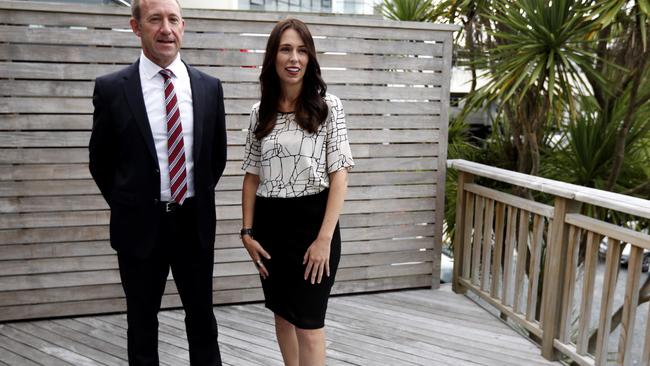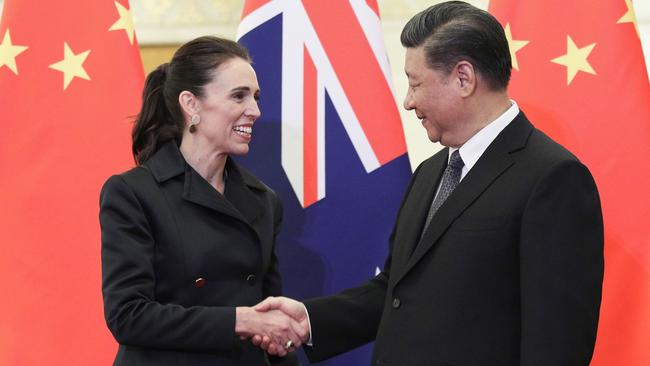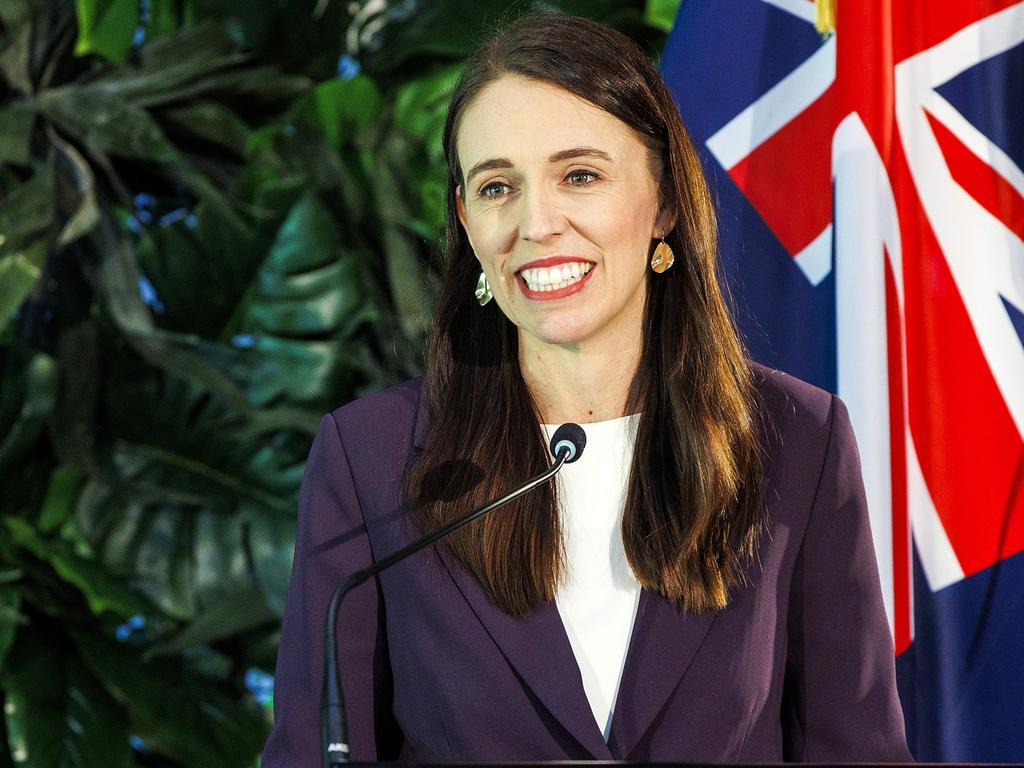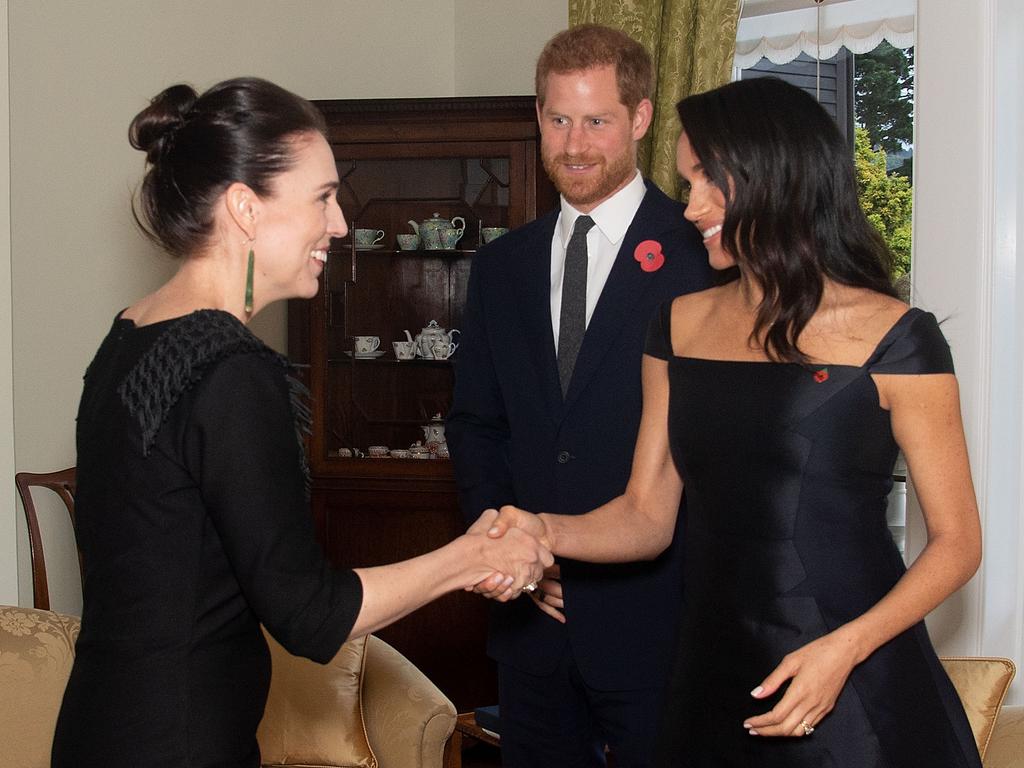Jacinda Ardern was an accidental Prime Minister … more vacuous than dangerous
Jacinda Ardern was never the dangerous left-wing ideologue sometimes portrayed, or even the “pragmatic idealist” she styled herself. Even had she an ideology beyond the banality of kindness, she was not effective enough to lead any sort of revolution.

It was all just a tale, full of sound and fury, signifying nothing. Jacinda Ardern’s fiercest critics always gave her too much credit.
The outgoing New Zealand Prime Minister was never the dangerous left-wing ideologue sometimes portrayed, or even the “pragmatic idealist” she styled herself. Nor was she particularly woke – certainly compared with Canadian Prime Minister Justin Trudeau, whom she found preposterous.
Even had she an ideology beyond the banality of kindness, she was not effective enough to lead any sort of revolution.
Ardern was an accidental prime minister.
Like other key figures in her government, she was a staffer in Helen Clark’s Labour government, having only modestly troubled her examiners with a Bachelor of Communication Studies at the University of Waikato.
Born in 1980, she was doing a working holiday in Britain, as a policy adviser in the “Better Regulation Executive” of Tony Blair’s Cabinet Office, before being recalled to “add a bit of glamour”, as a senior party official put it, to Labour’s 2008 line up.

Her nine years in opposition were undistinguished. She proposed no important legislation or policies while in opposition, during which time she remained a list-only MP until 2017 – with two failures to win the historically Labour seat of Auckland Central.
Her destiny was assumed to be deputy to her friend Grant Robertson, picked since his student-union days to be New Zealand’s first gay prime minister. He twice won the support of the party room to become leader, but was blocked by the unions.
Only Labour’s disastrous polling in 2017 under former union boss Andrew Little created the circumstances Labour would turn to Ardern, based on her support among young people and 20-something parliamentary reporters who thought they saw more in her than suggested by her record.
Ardern performed magnificently in front of the cameras at her first press conference as leader. With the exception of Labour’s existing promise to build 100,000 cheap houses, she largely refrained from offering policy beyond a slogan to “Let’s Do This” – however voters wanted to define “this”.


Despite reports of “Jacindamania”, there was never a full-scale voter groundswell for the then 37-year-old. Labour won just 38 per cent, behind National on 44 per cent. Ardern was helped by the far-left Greens on 7 per cent, but was only put over the line by Winston Peters’ NZ First, a One Nation-lite.
Ardern’s first full year as prime minister, 2018, was as mediocre as her nine in opposition. She was transformed by her national leadership after the March 15, 2019, Christchurch terrorist attack.
Yet, by the beginning of 2020, polls again indicated, at best, a tight race, and more likely that Ardern’s would be New Zealand’s first one-term government since 1975.
The problem was her ministers’ inability to deliver anything. Most symbolically, of the 100,000 houses promised, only around 1000 were ever built.
Even Ardern’s response to the March 15 terrorist attack failed in its substantive elements. Her “Christchurch Call” to eliminate terrorist and violent extremist online content has lots of signatures but no obvious results. Unlike John Howard’s successful gun reforms after Port Arthur, Ardern’s inadvertently led to firearms owned by law-abiding citizens ending up with criminal gangs.

Covid again transformed her, leading to her extraordinary 2020 election triumph, with 50 per cent of the vote, the highest achieved in New Zealand since 1951, allowing Labour to govern alone.
Without Peters’ handbrake, the new government, in which Ardern chose to include the Greens, was sold as now able to get on with the economic, social and environmental transformation she promised. Nothing meaningful eventuated.
Ardern, who notoriously confused GDP and government spending in her first term as Prime Minister, disagreed with Treasury that the massive Covid fiscal and monetary stimulus would cause inflation. But it did, with house prices increasing by an estimated $NZ1 trillion in 2020-21 at the expense of renters and lower income earners. When inflation spread to consumer prices, inequality, which Ardern had promised to narrow, widened further.
After Ardern finally dropped her attempt to keep New Zealand Covid-free, it spread just as it has everywhere else. New Zealand’s death rate is now comparable with Australia’s.
On foreign policy, Ardern shifted New Zealand ever-so-slightly towards Australia and NATO, but its economic reliance on China remains unaddressed.

Meanwhile, her climate-change policies saw New Zealand resume coal imports while farmers, the biggest emitters, remain largely excluded. A controversial $NZ30 billion light-rail proposal for Auckland hasn’t moved beyond the conceptual stage, despite Ardern’s first promise as Labour leader being that it would be finished by now.
There were some worries about Ardern’s alleged plans to introduce 50:50 co-governance with Maori tribes, discussed in a government paper called He Puapua – but, beyond increasing the use of the Maori language, Ardern’s legacy was in fact to slow the process of reparation and reconciliation from that achieved by National. A major proposal to amalgamate fresh-, storm- and wastewater services is also floundering over fears of Maori control.
Elsewhere, proposed school reforms were dropped after opposition from prominent principals, a multibillion-dollar allocation for mental health never reached providers, a wider multibillion-dollar health-sector restructuring became a mere rebranding exercise, as did a merger of polytechnics, and Ardern ruled out ever reforming the tax system to include capital gains from owner-occupied homes, despite saying she wanted to.
Ardern was no wild-eyed socialist. The lesson from her five-years is not about the dangers of ideology. It’s a sad story of vacuity and incompetence.
Matthew Hooton is a political and public affairs strategist based in Auckland and completing his PhD thesis on “Conservatism & Change” at the University of Auckland. His political clients have included the NZ National Party, NZ Act Party and, currently, the Mayor of Auckland. These views are his own.






To join the conversation, please log in. Don't have an account? Register
Join the conversation, you are commenting as Logout